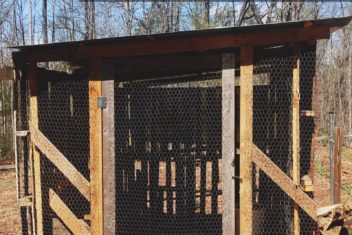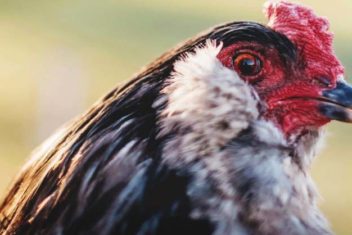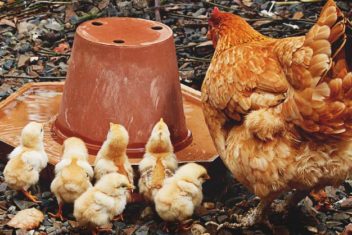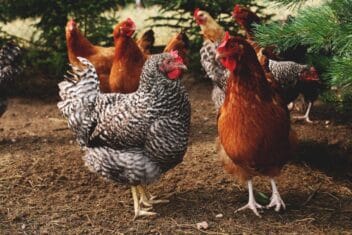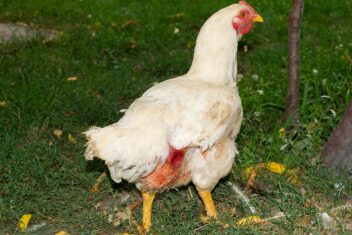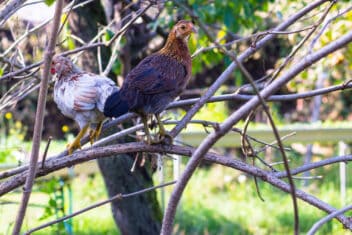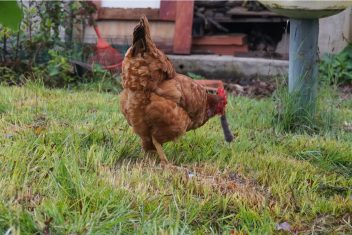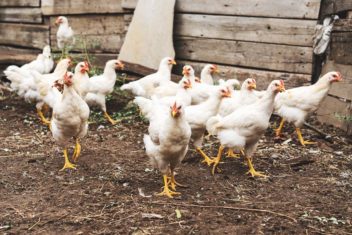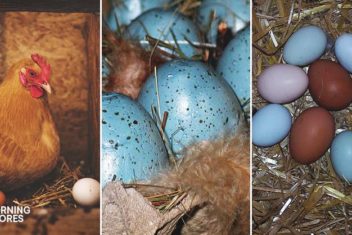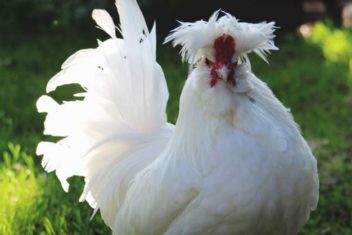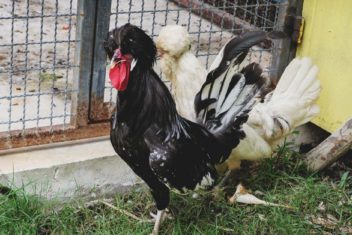Most chicken keepers have at least have heard of the deep litter method for taking care of their coop. If you haven’t, it’s time to get to know this ingenious process. Aside from being an easy way to take care of your chickens in the cold winter, you can use the chicken manure in your garden as a fertilizer.
The deep litter method is a smart way to manage a backyard chicken flock. Instead of scooping out the litter in the coop each week, you let the manure and bedding material accumulate inside.
As the poop and bedding start to decompose, you get a nutrient-rich compost that benefits the garden. At the same time, the composting process creates warmth, leading to a warmer coop.
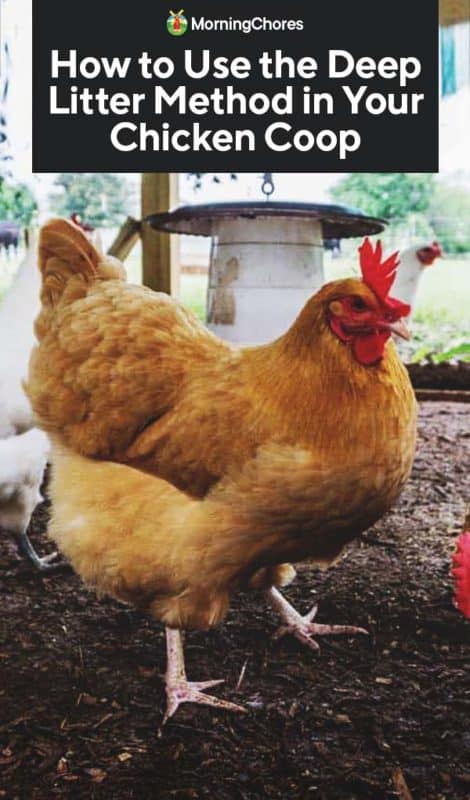
What Is The Deep Litter Method?
Taking care of the chicken coop when the temperatures dip into the negatives isn’t a chore anyone enjoys, and the deep litter method is an old-time solution to this issue.
Essentially, deep litter method means you leave the bedding and poop in the coop where it starts to decompose and turn into compost, instead of cleaning and replacing it regularly.
The benefit is twofold: first, you get all that lovely compost for your garden. The second benefit is that the composting process generates heat, and that heat can keep your coop warm without a heat lamp.
How To Use the Deep Litter Method in the Coop

In the fall, before the temperatures get too low, spread a 3-4 inch layer of clean litter on the floor of your coop. You can use leaves, straw, or wood shavings, but most chicken keepers use wood shavings.
Once a week, as the manure starts to accumulate on the floor, toss in another layer of litter. Stir the bedding once or twice a week, but if you throw scratch grains into your coop, the chickens will stir and move the litter for you.
It’s necessary to move the litter around in the coop to help add oxygen, which is necessary for decomposition. When you find clumps of bedding together, use a rake or pitchfork to break up them up. It’s also essential for your coop to have plenty of ventilation in the winter.
Troubleshooting the Deep Litter Method
While the deep litter method is pretty straightforward, you might run into a few problems.
“My Coop Smells Awful!“
Any ammonia odor indicates that something is wrong in your deep litter. If you notice the scent, you need to add more litter. If it’s not absorbing enough, try adding some clay to the bedding as well.
The other problem is litter that isn’t being mixed enough. Think of your litter as an active compost pile. Chickens love the opportunity to dig into standard compost piles, and the compost being created in their coop is just as excellent.
If your chickens aren’t stirring things up enough, you’ll need to get in there and stir things up frequently for them.
“My Litter Isn’t Decomposing“
If you already have a compost pile, you understand that any good pile has a balance of brown and green materials. Green materials contain nitrogen, and brown materials contain carbon. In your chicken coop, the bedding material that you use is the brown material, and the chicken manure acts as the green material.
Most problems that take place with the deep litter method is due to a misbalance of the materials. If your chickens go on a pooping spree and you don’t have enough bedding, you’ll have problems.
Determining When The Litter is Ready
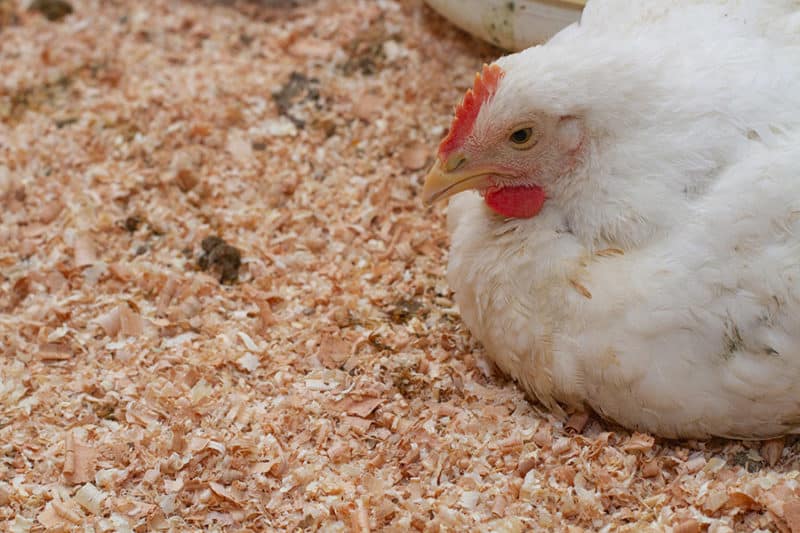
Don’t dump the litter right into the garden! Chicken manure is considered “hot” manure because of the high amount of nitrogen, which can burn your plants if you add too much.
Make sure that all of the litter is thoroughly decomposed and odorless. If so, you can work it right into the garden beds as it is.
If you find some fresh manure in the litter that has yet to decompose fully, add it to another compost pile or let it sit longer, giving it more time to decompose.
It can be hard to decide on whether or not your manure-litter is ready to be used in your garden. My best suggestion is to try to germinate a seedling in a pot of soil mixed with a small amount of manure-litter.
If the seed fails to germinate, it’s likely the litter is too hot and needs more time to compost. If the seed germinates, then your bedding should be ready to use in your garden.
How to Use the Litter in Your Garden
There are several ways to use this rich manure in your garden:
Mix It With Existing Compost
Your first choice is to dump the manure into your existing compost bin. This is a great option if the manure isn’t entirely decomposed. You can leave it in the compost for several months, allowing it to complete the process and cure thoroughly.
This option can be the right one if you empty your coop in the spring and find that the manure isn’t ready to apply to the garden. Instead, you can put it in the compost bin and wait to spread it in the fall. Alternatively, you can wait an entire year and apply the litter blend the following spring.
Some gardeners make this choice because they want to spread both the nutrient-rich litter and compost in their garden at the same time.
Add Directly to Your Garden
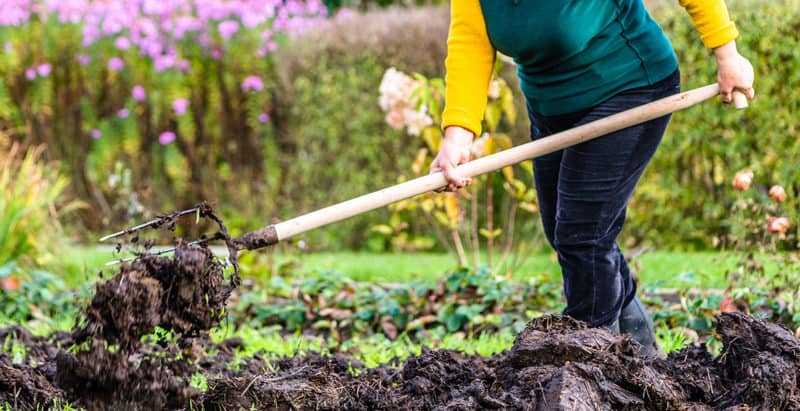
This is probably the easiest and most commonly used option. You don’t need to use tons of the litter; place an inch or two on the soil surface and rake it in.
It’s best to do this in the fall unless you know without a doubt that the litter is fully composted and ready to use. You don’t want to risk burning and killing your plants.
Here are two ways to do this.
- In the fall, after your garden is complete, empty your chicken coop (or have it piled somewhere waiting) and spread it directly over the garden soil. Rake it in and let it sit until spring when you start your spring garden.
- In the fall, when you clean out your chicken coop, find a place or an empty compost bin where you can keep the litter until the spring. Then, in the spring, spread the bedding over your garden bed, rake or till it in, and plant your crops as you usually would.
Dig a Pit and Plant Around It
Another option is to dig a pit in your garden bed and fill it with manure-litter and other compost. Cover it back with soil. Then, put your plants around the pit.
This might seem like a strange method, but the plant roots will be able to reach the pit and benefit from all of the nutrients without burning. It’s similar to the idea of trench composting, but you’re using composted litter instead of prepared compost.
The Benefits of Using Deep Litter in the Garden
The manure-litter that you remove from the chicken coop is as beneficial for your garden as pricey compost from the store. It’s full of microbes that can help control pathogens that might want to take up residence in your garden. That’s why the deep litter method can help make your chickens less susceptible to diseases.
Manure-litter is full of nutrients and nitrogen, which is exactly what your garden needs. Chicken manure is a significant asset for home gardeners because it adds organic matter to the soil. At the same time, using it in the garden bed can increase water retention capacity while adding beneficial biota to the ground.
Chicken manure contains nitrogen, potassium, and phosphorus, which is what all-purpose fertilizers that you find in the store have. In fact, chicken manure has more of these nutrients than horse or cow manure!
Cleaning Out Your Deep Litter Coop
There comes a time when you need to remove all of the litter in the coop. As you might imagine, it’s best to save this for a day when you have several hours available. If you leave the litter in the coop for an entire winter, you could have up to 12 inches of bedding to remove!
The best time to clean out your deep litter method coop is either early spring or fall, but you shouldn’t remove ALL of the litter. There needs to be a base layer left in place to help inoculate the new material with all of the microbes necessary to get the composting process started.
The Bottom Line
Using the deep litter method is smart for two reasons. Not only do you have an easy way of taking care of your chicken coop in the winter, but you can use the composted manure and litter to benefit your garden. All of those nutrients and microbes will kick your garden into overdrive, leading to a bountiful harvest.

